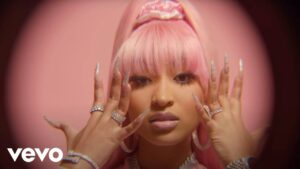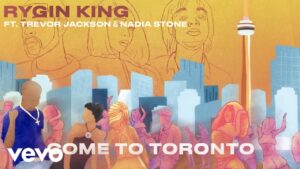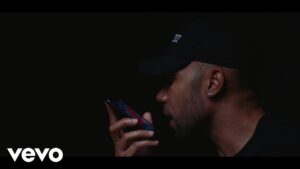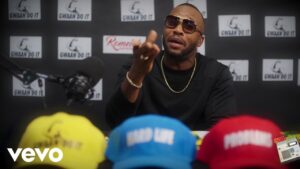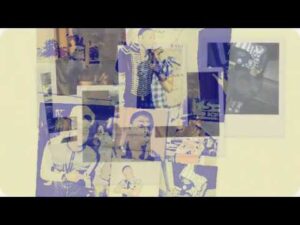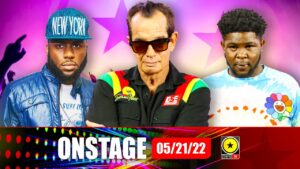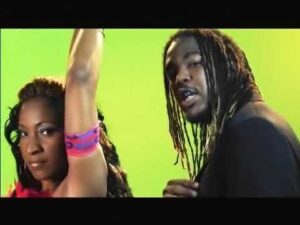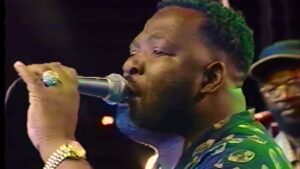
Louie Culture meets Capleton (Portland Splash)
2022
@LeoOReggio
E-Store: https://leosretroreggaestore.company.site/
Facebook: facebook.com/everoreggio
He’s also known as DJ Louie Culture, as that is the name he entered the music business with, but ever since he scored with his big hit, Dancehall fans, at home and abroad, have branded him “Mr. Gangalee.” He’s very proud to wear this title, not only because he made it popular, but more so because his belief in the concept of the word “gangalee” has been his main driving force to success.
Now, before driving you all nuts, here’s the history of the word and the man called Gangalee. Follow mi! “Gangalee” is an old Jamaican rural term for an unruly, uncontrollable, bad person. As old people would say, “A soon cool yuh ’cause yuh a gwan like yuh a gangalee.”
Well, Louie Culture, who was born in rural Portland (Windsor Forest to be exact), on May 9, 1968, took that old rural term and gave it a new meaning and lease on life in 1993. To Louie, a “gangalee” is a freedom fighter. One who fights for and never gives up on his beliefs, and what he wants and dreams of, no matter what the circumstances, obstacles or difficulties may be. Even if it means going or fighting the battle alone, with God by your side.
Louie Culture, born Lewin Brown, started out DJing while still at school in Portland. He took the name of his mentor Bobby Culture and fused it with his pet name “Louie,” to come up with the name Louie Culture. Like his mentor, Louie DJayed a lot of Cultural tunes. His first recording was “Rat a Bother Me” (with fellow DJ and friend Waynie Ranking) for producer Red Man in 1986.
After recording some songs for Colin Fatta, Louie met DJ Terror Fabulous. Terror introduced him to the “Mad House” crew. That’s when his career took off.
He recorded and scored with songs “Live and Learn” (with Wayne Wonder), “Excellent,” “Bogus Badge,” “Revolution Song,” “No Gal” (on the Pepperseed rhythm), and then the monster hit and title track “Gangalee”, that gave him his first LP, produced by Stone Love (Released 1994/ Available at VP Music Group).
He remembers when he used to go to producers with reality tunes, and they’d tell him, “Them sound good man, but give me gal tune or gun lyrics.” So, what he did as a gangalee was to give the producers what they wanted until they had to take “whey mi want to give them, and that is Culture.”
Louie, a Rastafarian, is glad to see that Culture songs are now on the upswing; but he’s a little concerned about the sincerity of the many DJs who are recording songs based on the Rastafarian belief. “‘Nuff man a say things them don’t know ’bout because them want to be under the light,” he explained. “A lot of them will soon have to stand up and be counted, then we’ll know who is sincere from who wearing ‘the Bogus Badge.'”
Mr. Gangalee made his debut appearance at Sunsplash in 1994, where he performed a great set.
Over the years Louie Culture has performed countless shows in Jamaica, Japan, the US, Canada, the UK, Europe, and all over the Caribbean.
Clifton George Bailey III (born 13 April 1967), better known by his stage name Capleton, is a Jamaican reggae and dancehall musician. He is also referred to as King Shango, King David, The Fireman, and The Prophet. His record label is called David House Productions. He is known for his Rastafari views expressed in his songs.
Bailey was born in Islington in St. Mary in 1967. As a youth, he was given the surname of a popular St. Mary lawyer and friend of the family,
Capleton was a nickname given by his relatives and friends. Capleton rejects the name given to him at birth. He now prefers “King Shango”, given its roots in the Yoruba language.
As a teenager, he sneaked out of his home to catch local dancehall acts, eventually leaving St. Mary for Kingston at the age of 18 to work on his career as a dancehall deejay.
In 1989, he got his first big international exposure. Stewart Brown, owner of a Toronto-based sound called African Star, gave the untested artist his first break, flying him to Canada for a stage show alongside Ninjaman and Flourgon.
When Capleton first arrived on the scene in the late 1980s, slackness and gun talk were the dominant lyrics in the dancehalls. The pre-Rasta Capleton had a string of hit songs from “Bumbo Red” to “Number One on the Look Good Chart” and “No Lotion Man”.
He recorded the song that began to establish his significant place in Dancehall, “Alms House” in 1992. The tune became a big hit in the dancehall, followed up immediately by “Music is a Mission” and the massive hit “Tour”. By 1993, he was voicing tunes that became increasingly conscious, such as “Prophet” and “Cold Blooded Murderer”.


